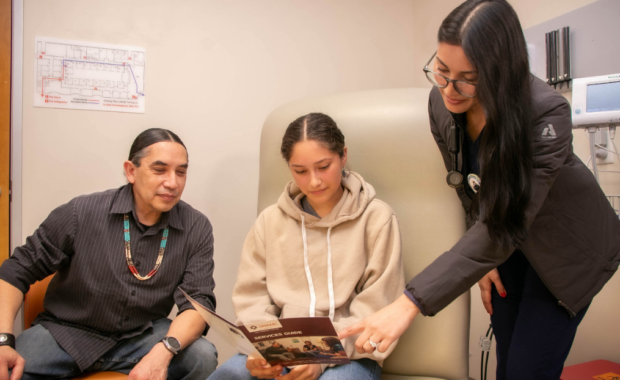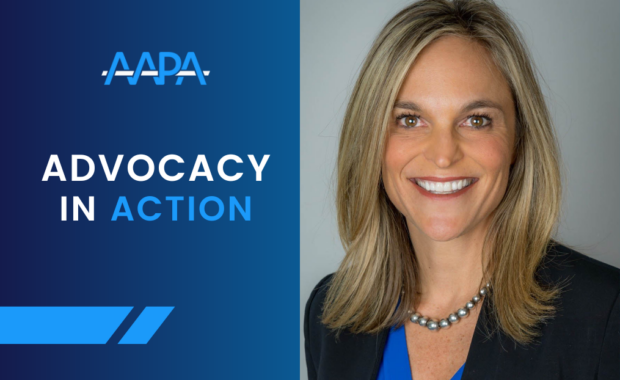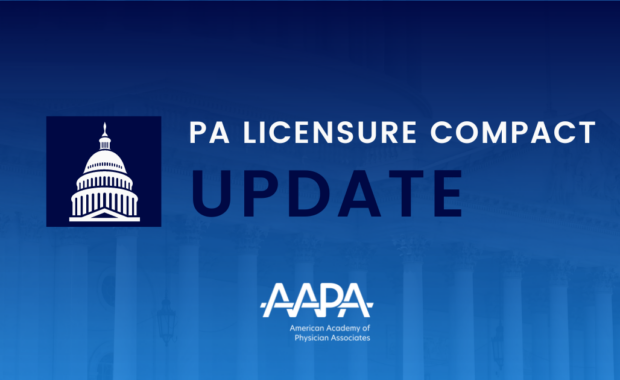PAs on the Front Lines: Alyssa Zantello Helps New York City During COVID-19
“This is What We Were Trained For”
By Alyssa Zantello, PA-C
June 11, 2020
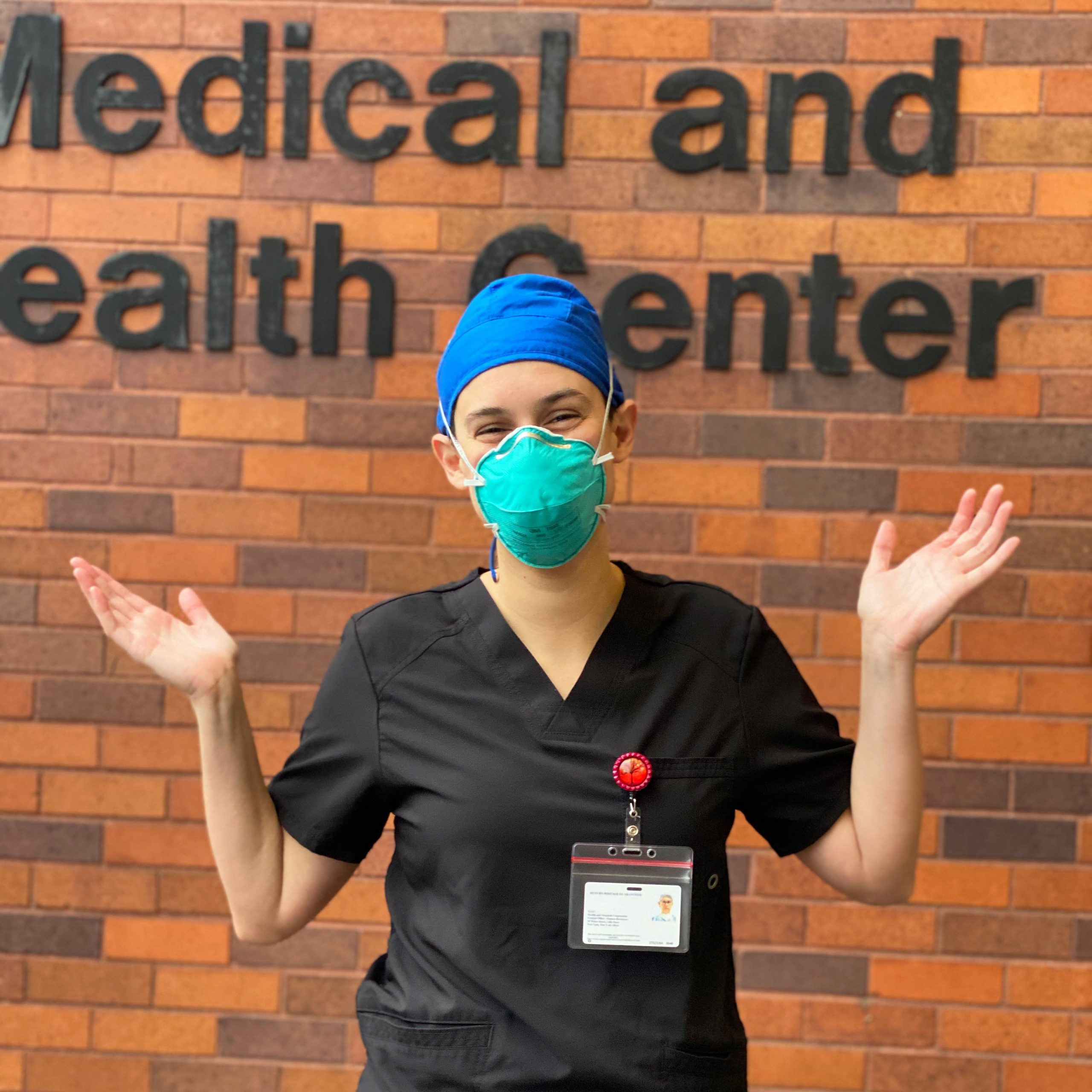 I normally practice outpatient orthopaedics in Michigan. But with one unexpected and brief conversation at the end of March, I started my journey to the front lines of the COVID-19 surge in New York City. My friend and mentor, Stacie Graves Skiano, PA-C, told me she was on her way to New Orleans to help with the crisis. “I can’t just sit at home and do nothing,” she said. “You should look into it and maybe you can come too. I feel like this is what we were trained for.” That brief conversation sparked a fire in my soul. The phrase “this is what we were trained for,” kept running through my mind.
I normally practice outpatient orthopaedics in Michigan. But with one unexpected and brief conversation at the end of March, I started my journey to the front lines of the COVID-19 surge in New York City. My friend and mentor, Stacie Graves Skiano, PA-C, told me she was on her way to New Orleans to help with the crisis. “I can’t just sit at home and do nothing,” she said. “You should look into it and maybe you can come too. I feel like this is what we were trained for.” That brief conversation sparked a fire in my soul. The phrase “this is what we were trained for,” kept running through my mind.
Among the thousands of frontline workers
When I applied to work on the front lines, the need for healthcare providers had shifted from New Orleans to New York City. The thought of going to New York City was intimidating and, frankly, quite frightening, but with each passing moment I felt increasingly compelled to go. Within 48 hours, I was on a flight from Detroit, heading into the world of the unknown.
Six years ago, on the first day of my PA program, I would have never believed I would be here today. Yet here I am among the thousands of other frontline workers, working endless hours to care for the most vulnerable humans affected by COVID-19. It is an incredible honor and privilege to be able to both represent my profession and offer assistance in this time of need. How humbling it is to work alongside some of the most incredible medical providers and join with them in their fight against this pandemic. This is, in my opinion, one of the greatest things about being a PA – we are trained to be adaptable and to meet the needs of any medical specialty.
[Share your story with AAPA about your work on the front lines of the COVID-19 response.]
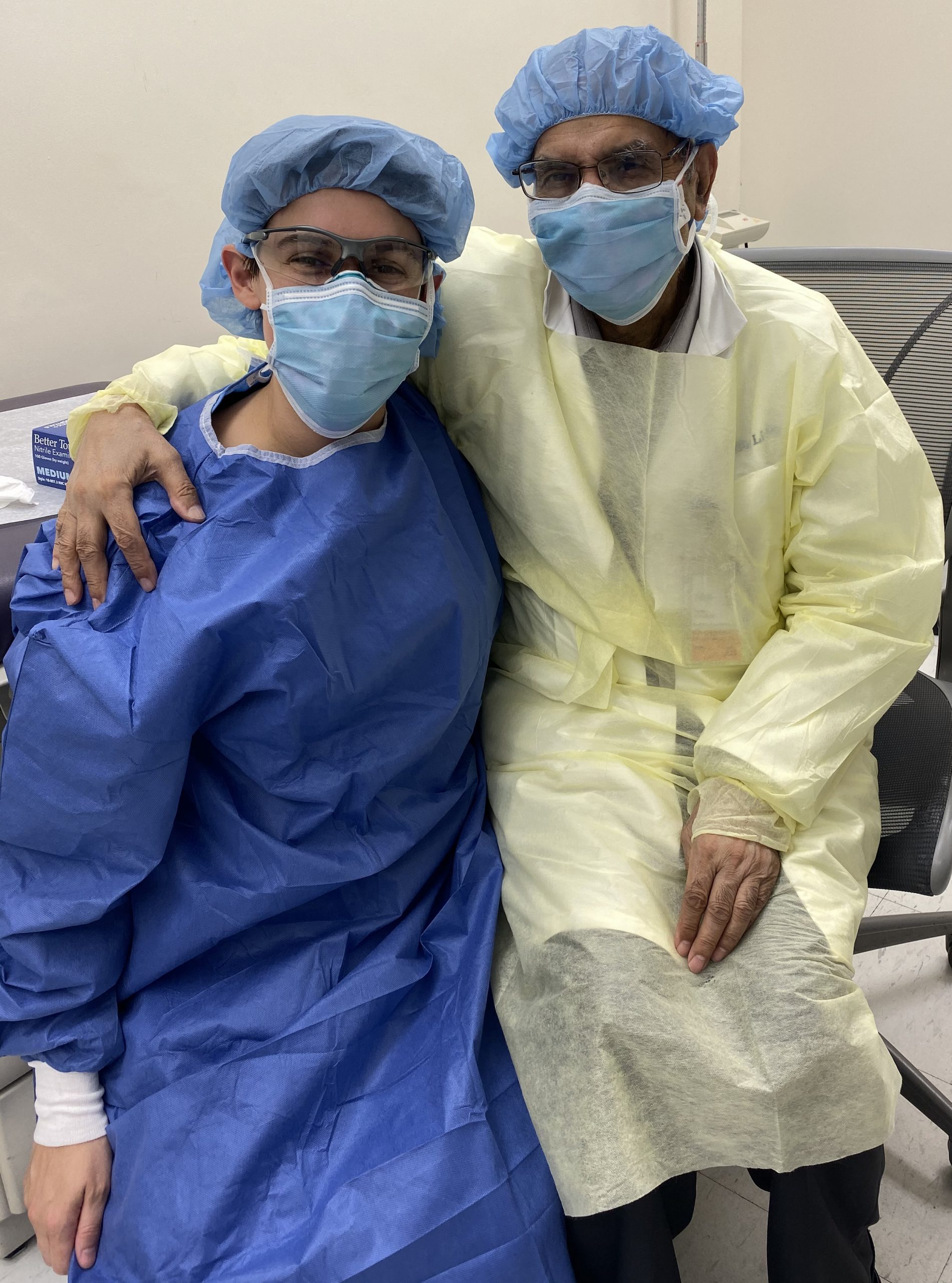
In the ED
My assignment was to the emergency department of a busy hospital in the Bronx, New York. The tour I received on my first shift demonstrated the dire need for more healthcare providers. The emergency department was overflowing with patients. The ED pods were filled with stretchers of intubated patients and patients on non-invasive ventilation. Ambulatory patients were seated in chairs while receiving treatment. Most floors of the hospital had been converted to intensive care units. There were holes drilled through the walls to keep IV lines and drips/pumps outside the patient rooms to avoid unnecessary room entrances and minimize exposure to potential transmission. Video monitors were used to monitor patients from outside their rooms. The floors were filled to such capacity that the ED was backed up with admitted patients waiting for a bed upstairs to become available.
Each new patient seemed to be another case of COVID. At first, testing was limited to admitted patients only. Patients stable for discharge home were treated on a presumptive diagnosis based on chest x-ray results, oxygen level, and clinical symptoms.
I began to see first-hand how the disease raged through our patients and how it affected the community. Young or old, healthy or sick, COVID seemed to arbitrarily attack some people more voraciously than others. I listened as providers recounted their experiences with patients decompensating quickly. Their stories made me nervous about decisions regarding whom I would discharge home versus whom I would admit.
[First National Survey of Physician Assistants on COVID-19 Crisis]
I witnessed patients come to the ED alone and afraid after suffering for a week or longer at home until they could no longer bear their symptoms. They didn’t want to come into the hospital and face the possibility they might die alone. Their family members were not allowed inside. They were met by hospital staff covered from head to toe in personal protective equipment. They conversed with their healthcare providers through a barrier of masks and face shields, gowns and gloves. The personal touch of human interaction was stifled by the necessary precautions to avoid disease transmission. I reminded myself that I couldn’t help others if I became a COVID casualty. I faced my own mortality each day. I understood the risks but pledged to do my best to protect myself and help patients with COVID-19.
There was a near palpable weight each day as I entered the ED fully knowing that any patient I encountered that day could – and likely would – have COVID-19. By the end of my shifts, I was fatigued from the extensive PPE I wore for 12 hours each day. I avoided removing my mask to drink water during my shift for fear of contaminating myself. My face hurt from the pressure of wearing my N95 all day. Strangely enough, I was thankful for that discomfort because it was a reminder of the protection my equipment offered me from this virus.
As the case numbers began to plateau and decline we were left wondering what was next. Would there be a second surge? Would we be inundated with other medical emergencies? Would people just stay home and decline to seek medical care? The explosive blast of that first wave was over, but the shattered debris of New York City began to settle and the assessment of covidlateral damage (medical, psychiatric, and economic problems occurring on the periphery of the COVID pandemic) began. How would the local healthcare workers hold up after weeks of intense mass influx patient care? How could we continuously adapt our patient care to improve outcomes? The only consistent thing to do was to return each day to the ED to see what that day would have in store.
Since my career has thus far been strictly in the outpatient orthopaedic surgery realm, I found the ED to be somewhat of a medical culture shock. I needed to very quickly learn the hospital’s patient flow, electronic medical records, and available resources, as well as reorient myself to the thought patterns used in assessing and treating a patient in the emergency medicine setting.
[Behind the Scenes at Northwell Health as PAs Respond to COVID-19]
PAs train for this
The words of my mentor kept replaying in my head: “this is what we were trained for.” I was trained as a PA to treat patients with respect and dignity while providing the best possible medical care. I was trained to take a good history and evaluate a patient thoroughly. I was trained to recognize a sick person and advocate for them. I was trained to have good clinical decision-making skills and to use appropriate medical resources for additional guidance and information. I was trained to be part of a collaborative healthcare system and work together with a team of doctors and nurses and support staff. I was trained to recognize my own limitations in knowledge and utilize the vast knowledge of those around me.
I am especially thankful for the doctors here who trusted me to provide care for their patients and who embraced me as a teammate in this battle against COVID-19. I am forever grateful to all those who have supported this effort. Never in my life did I imagine I’d be fighting a pandemic as part of an incredible team of healthcare providers, and never in my life have I been more proud to be part of a collective effort to help those who need it most.
Alyssa Zantello, PA-C, practices orthopaedics in Brighton, Michigan. She is a graduate of the Eastern Michigan University PA program and has been practicing medicine for 4 years. She volunteered to go to New York City during the March 2020 COVID-19 surge and worked there for six weeks.
You May Also Like
First National Survey of Physician Assistants on COVID-19 Crisis
Behind the Scenes at Northwell Health as PAs Respond to COVID-19
PA Helps Transform Graduation Gowns Into PPE
Thank you for reading AAPA’s News Central
You have 2 articles left this month. Create a free account to read more stories, or become a member for more access to exclusive benefits! Already have an account? Log in.

